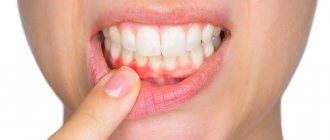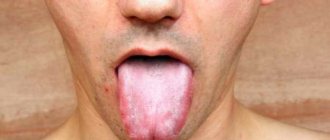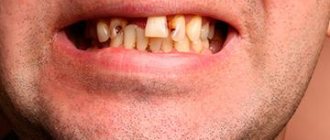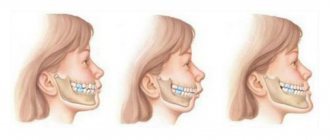Treatment of tooth root perforation with MTA bioceramics!
Tooth perforation (tooth root perforation) is one of the most common complications of dental treatment. Usually, dentists, when faced with such a problem, recommend that the tooth be removed immediately. However, modern research has shown that perforation of the tooth root is not a reason for its removal . Advances in medicine make it possible to save such teeth, and in the vast majority of cases.
Dentists at the Bionic Dentis clinic have successfully mastered the treatment of tooth root perforation using MTA bioceramics. We cure perforations in 98% of cases!
What to do if your teeth are rotting
Rot inside the tooth is dangerous for the entire body. Therefore, at the first signs of decay of dental tissues, you should go to the dentist.
Before providing first aid, it is recommended:
- Rinse your mouth with a herbal decoction that has anti-inflammatory and antimicrobial effects. It's better to take chamomile and sage.
- Rinse your mouth with a pharmaceutical antiseptic: Chlorhexidine, Miramistin.
- Thoroughly clean the surface of the dentition to prevent the accumulation of soft plaque and its transformation into hard tartar: bacteria multiply under its surface and spoil the enamel even faster.
- You should not try to remove pus yourself by picking at the enamel with a sharp object. This action will provoke even greater destruction of damaged tissue.
- On the side of the jaw where the rotten tooth is located, it is better not to chew anything so that food does not penetrate into the carious holes.
- After eating, you need to rinse the remaining pieces of food with a weak saline solution or boiled water.
Tooth root perforation - classification.
Tooth perforation is a communication between the internal cavities of the tooth with the external environment or surrounding tissues. Such a message can appear naturally, for example, as a result of the carious process, the tooth can “rotten” through or as a result of the actions of the dentist.
Perforation can be localized:
- in the area of the bottom of the pulp chamber of the tooth.
- in the root wall;
Can a dead tooth hurt?
The appearance of pain in a dead tooth depends on the stage at which necrosis progresses. At the very beginning there is usually no pain. During the transitional stage, the already mentioned throbbing toothache may appear. It is a consequence of retention of purulent exudate and usually worsens in a lying position. After its cessation, complete necrosis of the dental pulp occurs.
Pain can also occur as a result of dental treatment. If a dentist places a prosthetic crown that is too large on a tooth, there is a high probability of overloading the tooth and causing periapical changes. In this situation, pain usually occurs during chewing. It can be easily eliminated at your next visit to the dentist by shortening the crown.
Tooth root perforation - causes.
The appearance of tooth root perforation during dental intervention is caused by:
- Strong bends of the root canals (i.e. individual features in the anatomy of the root canals). The fact is that the dentist uses instruments that are initially straight and when inserted into the root canal, they can pierce it in an unplanned place.
- Teeth previously treated with resorcinol-formalin method. This technique was widely used in the USSR. As a result of this treatment, the root canal was not cleared of contents, but was filled with a medicinal mixture. Under the influence of this mixture, the tooth became glassy and changed its color to red-brown. However, several years after such treatment, teeth begin to decay, and microorganisms that were not cleaned out of the root canal begin to multiply, leading to inflammation at the root apex, granuloma or cyst. In this case, the dentist begins to clean the root canals again. However, over the years, a very strong “glassy” substance is formed at the root of the tooth. It is much stronger than root tissue. As a result of attempts to unfill such a canal, the dentist pierces the canal in the wrong place.
- A common cause of tooth root perforation is inappropriate expansion of the root canal to prepare it for an intraradicular pin or intraradicular inlay. The dentist may rush and the rotating instrument will pierce the canal in the wrong place.
- In clinics where a radiovisiograph is not used to control the shape of the root canal, the doctor does not know in advance how the tooth root is going. If the dentist starts looking for a root canal “at random” without first taking an x-ray. In this case, he will most likely make a perforation in the tooth.
- One of the most dangerous perforations of the tooth root is band perforations, which appear from excessive expansion of the tooth root. A dentist who does not use x-rays may overdo the cleaning and enlargement of the root canal, resulting in a perforation.
The natural cause of perforation is carious destruction of dental tissues. If the patient delays dental treatment, the tooth can “rot” through.
Some patients are at higher risk of root perforation:
- with difficulty opening the mouth. In this case, the dentist has difficulty seeing what he is doing, which increases the risk of perforation.
- for uneven teeth and malocclusion. In this case, the roots of the teeth are located atypically, and the dentist looks for them in familiar places. These teeth are most often subject to perforation.
- for narrow, short, crooked root canals.
- when treating teeth through an artificial crown.
- in the presence of resorcinol-formalin teeth.
- when re-treating teeth treated in the USSR or state dental clinics.
The root canal system of the tooth (especially in the lateral) part of the jaw is highly complex. Treatment of such canals requires a highly qualified dentist, the availability of specialized endodontic instruments and augmentation systems in the clinic.
Only 3 percent of Russian clinics can provide adequate quality in the treatment of dental pulpitis and periodontitis.
The Bionic Dentis clinic specializes in complex cases of dental treatment. We cope 100% even in the most difficult clinical cases.
What are the dangers of rotten teeth, consequences for the body
Many people ignore the process of tooth decay unless it is accompanied by severe pain. But the consequences of the carious process can be unpredictable and dangerous. If you have rotten teeth, the following complications may develop:
- Destruction of bone tissue of the musculoskeletal system.
- Endocarditis is inflammation of the lining of the heart.
- Inflammatory pathologies of the kidneys.
- Infections of ENT organs.
- Psychological complexes due to discomfort during communication and dissatisfaction with the appearance of the dentition.
- Purulent-inflammatory diseases in the gums (abscesses, phlegmons) and, as a result, the spread of infection throughout the body, leading to general intoxication.
The health of baby teeth greatly affects the condition of the permanent buds. Therefore, if nothing is done about the decay of milk dental tissues, in the future the child may have big problems with the formation of a permanent dentition.
Tooth root perforation - symptoms.
It should be noted that at first, if the patient has a perforation of the tooth root and the dentist does not close it, then the patient will not experience any unpleasant sensations.
The clinical picture will appear only when an inflammatory process occurs in the area of perforation in the jaw bone tissue. This may take several years.
Perforation with an inflammatory process gives the following symptoms:
- spontaneous pain in the area of the affected tooth;
- swelling and redness of the gums over the area of inflammation;
- the presence of a fistula on the gum
- flux formation
- sharp pain when the affected teeth bite hard food
The diagnosis of tooth root perforation is quite difficult in some cases.
The dentist performs radiovisiography of the tooth or uses computed tomography. On tomography, perforations can be suspected in places where the bone tissue is inflamed. However, in cases where the cause of perforation of the tooth root is a root post or inlay, this is clearly visible on the image or tomography.
Sometimes, to determine the location of the perforation, it is necessary to first clear the root canals of old filling material.
Treatment of root perforation with MTA bioceramics
Determining the tactics for treating a tooth with perforation depends on its location and the size of the inflammation in the bone tissue in its area.
Tactics of dentists at the Bionic Dentis clinic
Many years of experience and training in Germany have led us to the optimal technique, which gives 90% percent of positive treatment outcomes:
- The old or temporary filling is removed from the tooth. This gives the dentist access to the pulp chamber of the tooth.
- The root canal is cleaned with an ultrasonic tip. We use the SIROSONIC SIRONA ultrasound system (Germany).
- When a canal is found, it is cleaned using a computerized root canal machine system. We use the latest generation endodontic system from VDW (Germany)
- The tools used are files made from a particularly durable medical alloy. With these instruments, the canal is cleared of residual filling material and infection.
- The cleaned root canal and perforation are disinfected with a French antiseptic solution from SEPTODONT.
- The antiseptic solution is activated by ultrasound. The cavitation effect caused by ultrasound causes the antiseptic to activate and penetrate to the maximum depth into the tooth tissue and clean the perforation.
- Perforation is processed by laser. The use of the SIROLASER SIRONA SIEMENS laser unit (Germany) allows our doctors to carry out the most thorough treatment, which is not available with other methods. It is the laser that ensures a successful treatment outcome.
- The root perforation is closed with a special preparation - bioceramics. This is a new development of scientists - a drug based on inorganic compounds. Bioceramics are extremely biocompatible, non-toxic, non-shrinking and chemically stable in the biological environment. And besides, which is very important for endodontics, bioceramics do not lead to an inflammatory reaction even when taken outside the root canal.
- The root canal is filled using the 3D technique. This unique technique was developed in Germany. With this method, hot plastic (alpha gutta-percha) is used to fill the root canal and perforation canal in some cases. The technique ensures lifelong sealing of the canal, which is the key to the absence of relapses of the disease.
- The tooth is restored with a filling, inlay or crown.
How to recognize a dead tooth?
When a tooth dies, many adverse reactions occur. With the necessary knowledge, you can easily recognize the problem. Due to irritation of the tissues around the tooth, gum abscess (in the form of a thick discharge consisting mainly of bacteria) and swelling may occur. A dead tooth can also be recognized by its dark, unnatural color, which is the result of cell death, and by its complete lack of response to any stimuli (heat, cold, or electrical stimuli). In the transitional stage preceding the death of the pulp, there may be increased sensitivity to heat and cold, as well as throbbing toothache.
In the last stages of tooth death, fever, chills and jaw pain may appear. Tarnishing of the enamel is also a warning sign. If any of the above symptoms appear, a visit to a specialist may be required to make a final diagnosis.
Tooth root perforation - cost of treatment.
We save teeth with perforations thanks to unique equipment, drugs and the qualifications of dentists:
- Treatment of perforations is carried out by our dentists under magnification using a dental microscope or binocular loupes.
- During treatment, a German computerized root canal cleaning system is used, which allows the dentist to accurately move along the root canal while cleaning it.
- Each stage of treatment is controlled by the XIOS SIEMENS radiovisiographic system (Germany). As mentioned above, perforations usually occur on teeth with curved canals, so the dentist must visually see where it is.
- When taking x-rays, we use a contrast agent that clearly identifies the location of the perforation.
- The root canal and perforation are cleared of contamination using the SIROSONIC SIEMENS ultrasonic system.
- To disinfect the canals, we use French broad-spectrum antiseptics from the company. This drug is recognized as the most effective in its field.
- The main feature of the treatment of perforation in our clinic is the use of the SIROLASER SIEMENS dental laser. This latest generation installation allows us to sterilize the root canal, the perforation area and laser treatment of the defect in the canal wall, which greatly increases the likelihood of tissue healing and relieves inflammation.
- We use premium-level bioceramics; this bioceramics is 100% compatible with tooth tissue and reliably closes the perforation hole.
Warning
: Invalid argument supplied for foreach() in
/var/www/u0695953/data/www/bionicdentis.ru/wp-content/themes/bionic/single-service.php
on line
59
| № | Procedure/manipulation | Price, rub.) |
Werner Elena Vladimirovna
Dentist periodontist
More details
Eremina Anna Arturovna
Dentist therapist
More details
Ozerov Petr Vladimirovich
Chief physician. Dentist, implantologist, orthopedist, surgeon. Laser dentistry specialist
More details
Causes of depulpation
There are a number of indications for dental nerve removal. Depulpation is most often carried out in the following cases:
- with extensive carious lesions affecting the dental nerve;
- development of infection in the dental canal;
- mechanical damage to the pulp;
- In the process of preparing for prosthetics, even a healthy pulp may be removed; this is necessary to eliminate the risk of developing re-inflammation in the tooth after the installation of an orthopedic structure.
The procedure for removing pulp from a tooth is performed in the following sequence: 1. Based on an x-ray taken, the doctor determines the structure and size of the dental canals. 2. Local anesthesia is administered. 3. The pulp is removed first in the coronal and then in the root part of the tooth. 4. Dental canals without pulp are carefully treated with an antiseptic solution. 6. After treatment, the canals are sealed. 7. Most often, a temporary filling is subsequently placed on the tooth, which later must be replaced with a permanent one.
Prognosis for treatment of root perforation:
The technique used in the Bionic Dentis clinic makes it possible to state: 95% of teeth with perforations can be successfully treated, and they will last for decades.
We have accumulated extensive experience in applying the technique and are experts in this matter.
In teeth with treated perforations, there is one point that is important to consider:
These teeth should not be used as support for bridges.
Over many years of practice in our clinic, more than 500 teeth with perforations have been successfully treated, and we have been able to observe such patients since 2006.
If you need to treat a tooth with perforation and save it from removal, we will apply all our experience and technical equipment to this.
As a result of contacting our clinic, we will save your tooth with perforation, which will serve you for several decades and eliminate the need to remove the tooth and install an implant.
Methods of treatment and restoration
If a tooth is cracked, whether it can be saved will depend directly on the nature of the injury and the time after which the person went to the dentist. With a high probability, you can save a tooth with small chips and microcracks. The use of composite materials will allow you to restore the crown without visible aesthetic defects.
The situation is much more complicated with extensive cracks. Crown restoration and treatment are carried out only if at least a third of the tooth root is preserved and there are no inflammatory or infectious processes.
In case of significant vertical or diagonal cracks, dentists remove one part of the crown and build up the second half or install a prosthesis on implants. Such manipulations are necessary, because even if the crack has not reached the base of the tooth, under load it will still crack the tooth and its integrity will require re-treatment after some time. Damage to the root system, jaw tissue, and pulp is performed by tooth extraction. Extraction is also used for damaged wisdom teeth.
If a tooth is cracked in half, it can be saved, but only partially if there is no serious damage. You should not delay your visit to the doctor. Modern dentistry has enormous possibilities for restoring teeth; even if removal is required, the crown can be restored with the help of prostheses that will not differ from the rest of the teeth.
In what cases is the nerve removed from a tooth?
First, let's look at why pulp removal (dental nerve) or depulpation is performed. The need for depulpation arises for several reasons. Practicing dentists identify the following indications for this operation:
- the occurrence of pulpitis: damage to the neurovascular bundle due to the spread of caries,
- extensive deep carious cavity: if the defect is more than 50% of the total volume of the crown, then a filling cannot be placed (it will not hold well and will quickly fall out), and other restoration options - pins, inlays, crowns - involve depulpation,
- the presence of several carious cavities: grinding down the enamel and removing infected dentin can significantly increase the size of the defect, i.e. again, the crown will have to be restored in such a way that pulp removal will have to be carried out,
- mechanical trauma: when a horizontal root crack is detected, for example, periodontitis: inflammation of the tissues of the ligamentous apparatus-1 surrounding the roots.
Can teeth turn black not due to caries?
In very rare cases, teenagers may experience darker tooth color if their daily diet includes a lot of soy sauce, coffee, tea, potatoes, or drugs containing fructose. However, such “darkness” is not at all similar to carious lesions and is easy to distinguish.
Do rotten teeth need to be treated?
Undoubtedly. Remember: the opinion that there is no need to treat baby teeth “because they will fall out anyway” is fundamentally wrong and even criminal. Firstly, caries in baby teeth spreads very rapidly: a couple of months ago the child simply had rotten teeth, and today he is already screaming and crying from pulpitis.
Secondly, untreated caries of a baby tooth can cause inflammation of the soft tissues, the appearance of an abscess, as well as such serious consequences as:
- Sepsis;
- Meningitis;
- Damage to large blood vessels in the neck area;
- Otitis;
- Sinusitis;
- Stomach pain, intestinal disorders, stool disorders and other gastrointestinal diseases.
Thirdly, advanced caries and tooth decay can lead to premature loss of a baby tooth, and subsequently to disruption of the even dentition of molars. Don’t forget that a rotten baby tooth can “infect” a molar tooth with caries.
Don’t forget about children’s complexes: rotten teeth look unsightly and cause significant discomfort to the baby.
How to spot rotting at an early stage?
In order not to go through all the horrors of treating rotten teeth with your beloved daughter or son, be able to recognize the first signs of caries in time:
- The characteristic “rotten” odor from a child’s mouth indicates the presence of cavities.
- Small yellowish spots on the teeth are the first stage of caries.
- A child’s complaints about discomfort when drinking cold, hot and sweet drinks and foods indicate thinning of the enamel.
- The characteristic black spots on the teeth are caries that need to be treated.
Do not forget that it is better to treat caries at an early stage, because it will be much more difficult to eliminate the problem of rotten teeth later.
How to cure rotten teeth?
To cure rotten teeth in a child means taking the baby to the dentist. If the baby’s teeth have already turned black, it is useless to treat them with folk remedies. A variety of balms, rinses and masks can only slow down caries.
An experienced dentist treats rotten teeth in children in stages:
- The doctor examines the oral cavity, identifies areas of caries and inflammation of the gums, and, if necessary, sends the child for an x-ray.
- Teeth are cleaned and caries is treated. If lesions have been identified in several teeth, the doctor draws up a treatment regimen. Milk teeth that cannot be cured are removed.
- To disinfect affected gums, the doctor may prescribe special rinses with herbal decoctions; in rare cases, antibiotics are prescribed to destroy the infection.
Parents should not forget that it is not enough to just cure rotten teeth. It is important to eliminate the cause of caries, otherwise in a couple of months the baby will end up in the dentist's chair again. For example, if the doctor said that the cause of caries lies in the gastrointestinal tract, it is important to visit a gastroenterologist with your child. If the teeth begin to rot because the baby is leaning on candy and soda, reconsider the diet.
There are alternative ways to treat teeth that are slightly affected by caries:
- Remineralization. The dentist strengthens the surface of the teeth with a special mineral composition.
- Silvering. If the child does not allow a filling to be placed, and the tooth is not severely affected by caries, the doctor can strengthen the damaged surface with a solution of silver nitrate.
- Laser therapy. In rare cases, shallow caries can be treated with a laser.
- Deep fluoridation is effective for minor enamel damage. After this procedure, the teeth are saturated with useful minerals for a long time.
- Ozonation for mild caries can clean the rotten row from pathogenic microorganisms.
How to prevent the appearance of rotten baby teeth?
To prevent the child’s teeth from rotting and the dental drill from marring the joyful moments of childhood, it is important to carry out proper caries prevention.
1. Be attentive to your baby
Examine your child’s teeth every two to three days and if characteristic carious cavities appear, immediately make an appointment for the baby to see a doctor.
2. Visit your dentist regularly
Even if you have not noticed any changes in your child’s oral cavity, be sure to take him to the doctor on a preventive basis. The pediatric dentist should be visited twice a year. An experienced specialist can even notice the beginning of caries, which appears as a light spot on the tooth. If caries is detected in a timely manner at an early stage, the doctor can slow down or stop its development using an enamel remineralization procedure.
It is recommended to visit the dentist in the morning, when the baby is alert and calm, and most importantly, has not yet had time to “work up” himself with fears.
3. Strengthen your enamel
Of course, the baby does not need to take antibiotics and anti-inflammatory drugs without a doctor’s prescription. However, you can completely strengthen your child’s enamel with natural ingredients, for example, rinse the mouth with herbal decoctions - oak bark, sage, calendula. These herbs have excellent anti-inflammatory, calming effects.
4. Watch your diet
Believe me, kids in adolescence and young adulthood will have time to eat plenty of chips and drink soda. But in early childhood, you can completely control the diet of your kids. Make sure that your child does not consume a lot of sweets and sours, give the baby more vegetables and fruits - fresh fruits are magic boxes of vitamins and help to naturally cleanse teeth. And, of course, give your child more milk, cottage cheese, kefir and other goodies from cows and goats.
How to properly brush baby teeth?
Teaching a child to take care of his teeth from childhood means ensuring him a happy adolescence and youth without toothache. And caring for your teeth means, first of all, proper brushing. Until the age of 3, it is better to help the child with this procedure, but after three, you can trust the child to brush his teeth on his own.
Remember:
- Teeth need to be brushed from top to bottom - this is the only way to remove the plaque that has formed.
- You need to brush your teeth for at least 2 minutes. Try placing an hourglass in your baby's bathroom, which will teach him to carry out the procedure for a long time. After finishing cleaning, rinse your mouth.
- Children, like adults, should brush their teeth twice a day - morning and evening, before bed. It is important to rinse your mouth after every meal.
To make the process of brushing teeth enjoyable for your baby, it is important to carefully choose toothpaste. For example, ASEPTA BABY gel toothpaste can be used for babies from 0 to 3 years old. The soft gel gently cares for your child's teeth and gums without damaging them. The natural components of the paste provide protection against caries and inflammatory processes in the oral cavity; the bright taste of “tutti-fruiti” makes cleaning a delicious adventure. But the main thing is that “ASEPTA BABY” does not contain abrasives, fluorine, parabens, or sodium lauryl sulfate.
We hope our recommendations for caring for children's teeth and caries treatment will be useful to you. And rotten teeth will never bother either kids or their parents.










